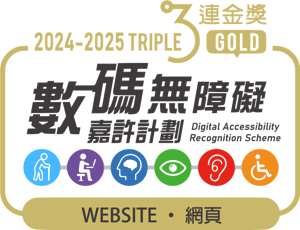Latest Constituent Fund Price
(as at: 07/01/2026)BEA (MPF) Master Trust Scheme
| Constituent Fund | NAV per unit (HKD) |
|---|---|
| BEA (MPF) Growth Fund | 30.1482 |
| BEA (MPF) Balanced Fund | 24.5781 |
| BEA (MPF) Stable Fund | 20.3758 |
| BEA (MPF) Global Equity Fund | 33.0609 |
| BEA (MPF) European Equity Fund | 20.8951 |
| BEA (MPF) North American Equity Fund | 44.6534 |
| BEA (MPF) Asian Equity Fund Note 1,2 | 40.3350 |
| BEA (MPF) Greater China Equity Fund Note 2 | 28.5838 |
| BEA (MPF) Japan Equity Fund | 14.7913 |
| BEA (MPF) Hong Kong Equity Fund | 23.8477 |
| BEA China Tracker Fund Note 2 | 10.2447 |
| BEA Hong Kong Tracker Fund | 17.6333 |
| BEA (MPF) Global Bond Fund | 11.0793 |
| BEA (MPF) RMB & HKD Money Market Fund Note 3 | 11.4003 |
| BEA (MPF) Conservative Fund Note 4 | 15.8205 |
| BEA (MPF) Core Accumulation Fund Note 5 | 18.3244 |
| BEA (MPF) Age 65 Plus Fund Note 5 | 12.5293 |
BEA (MPF) Value Scheme
| Constituent Fund | NAV per unit (HKD) |
|---|---|
| BEA Growth Fund | 20.6415 |
| BEA Balanced Fund | 17.4230 |
| BEA Stable Fund | 14.1791 |
| BEA Global Equity Fund | 34.1202 |
| BEA Asian Equity Fund Note 1,2 | 21.4652 |
| BEA Greater China Equity Fund Note 2 | 25.1011 |
| BEA Hong Kong Tracker Fund | 16.0791 |
| BEA Global Bond Fund | 9.5859 |
| BEA MPF Conservative Fund Note 4 | 11.8928 |
| BEA Core Accumulation Fund Note 5 | 18.4004 |
| BEA Age 65 Plus Fund Note 5 | 12.5087 |
BEA (MPF) Industry Scheme
| Constituent Fund | NAV per unit (HKD) |
|---|---|
| BEA (Industry Scheme) Growth Fund | 31.0687 |
| BEA (Industry Scheme) Balanced Fund | 24.8144 |
| BEA (Industry Scheme) Stable Fund | 20.7894 |
| BEA (Industry Scheme) Asian Equity Fund Note 1,2 | 23.4972 |
| BEA (Industry Scheme) Greater China Equity Fund Note 2 | 22.7436 |
| BEA (Industry Scheme) Hong Kong Equity Fund | 14.1796 |
| BEA China Tracker Fund Note 2 | 10.5915 |
| BEA Hong Kong Tracker Fund | 17.6378 |
| BEA (Industry Scheme) RMB & HKD Money Market Fund Note 3 | 11.3366 |
| BEA (Industry Scheme) MPF Conservative Fund Note 4 | 15.1965 |
| BEA (Industry Scheme) Core Accumulation Fund Note 5 | 18.2616 |
| BEA (Industry Scheme) Age 65 Plus Fund Note 5 | 12.5546 |
Investments inherently involve risks and the unit prices of the constituent funds may go down as well as up. The above figures are for indication only while past performance is not indicative of future performance. For further details including the product features and risk factors involved, please refer to the MPF Scheme Brochure of the relevant scheme.
Note 1: Various countries in which these constituent funds will invest are considered as emerging markets. As emerging markets tend to be more volatile than developed markets, any holdings in emerging markets are exposed to higher levels of market risk.
Note 2: These constituent funds may invest in securities of companies that are domiciled or conduct a significant portion of their business activities in, or derive or are expected to derive a significant portion of their revenues from, China. To the extent that these constituent funds have exposure to such companies, the value of the assets of these constituent funds may be affected by political, legal, economic, and fiscal uncertainties within China. Existing laws and regulations may not be consistently applied.
Note 3: These constituent funds are denominated in HKD only and not in RMB. Their investment in RMB deposits and RMB debt instruments will be subject to additional currency risks. In particular, RMB is currently not a freely convertible currency and is subject to foreign exchange controls and repatriation restrictions imposed by the Chinese government. Also, their investment in offshore RMB debt securities will be subject to additional market / liquidity risks. There is currently no active secondary market for offshore RMB debt securities and therefore, these constituent funds may need to hold investments until maturity date of such offshore RMB debt securities. In addition, although the issuance of offshore RMB debt securities has increased substantially in recent years, supply still lags the demand for offshore RMB debt securities. As a result, new issues of offshore RMB debt securities are usually oversubscribed and may be priced higher than and / or trade with a lower yield than equivalent onshore RMB debt securities. Currently, most of the offshore RMB debt securities available in the market may not meet the requirements under Schedule 1 to the Mandatory Provident Fund Schemes (General) Regulation and therefore, the offshore RMB debts securities available for investment by these constituent funds may be limited which may result in concentration of credit risk.
Note 4: BEA (MPF) Conservative Fund under BEA (MPF) Master Trust Scheme, BEA MPF Conservative Fund under BEA (MPF) Value Scheme and BEA (Industry Scheme) MPF Conservative Fund under BEA (MPF) Industry Scheme (collectively "MCF") do not provide any guarantee of the repayment of capital. Investment in MCF is not equivalent to placing funds on deposit with a bank or deposit-taking company. MCF are not subject to the supervision of the Hong Kong Monetary Authority.
Fees and charges of an MPF conservative fund can be deducted from either (i) the assets of such fund or (ii) Member's account by way of unit deduction. Before 1st April, 2022, MCF use method (ii) and, their unit prices, net asset value and fund performance quoted did not reflect the impact of fees and charges. From 1st April, 2022, the fees and charges deduction method has changed from (ii) to (i) and, therefore, their unit prices, net asset value and fund performance quoted have reflected the impact of fees and charges for the period starting from 1st April, 2022.
Note 5: Default Investment Strategy ("DIS") is a ready-made investment arrangement mainly designed for those members who are not interested or do not wish to make a fund choice, and is also available as an investment choice itself, for members who find it suitable for their own circumstances. Members who do not wish to choose an investment option do not have to do so. For those members who do not make an investment choice, their future contributions and accrued benefits transferred from another MPF scheme will be invested in accordance with the DIS.
DIS is not a fund - it is a strategy that uses two constituent funds, i.e. the Core Accumulation Fund and Age 65 Plus Fund to automatically reduce the risk exposure as the member approaches retirement age. Core Accumulation Fund will invest around 60% in higher risk assets (higher risk assets generally means equities or similar investments) whereas the Age 65 Plus Fund will invest around 20% in higher risk assets. Switching of the existing accrued benefits among Core Accumulation Fund and Age 65 Plus Fund will be automatically carried out each year on a member's birthday from the age of 50 to 64 and according to the allocation percentages as shown in the DIS de-risking table.
To invest in DIS, member's instruction must be an instruction to invest 100% of: (A) existing accrued benefits and/or (B) future contributions and accrued benefits transferred from another scheme in the DIS. (Applicable to BEA (MPF) Industry Scheme only)
De-risking mechanism will not apply where the member chooses these constituent funds as standalone investments (rather than as part of the DIS). However, the funds with same name under DIS and non-DIS have the same unit prices.
For further details, including the product features, de-risking mechanism and table, fees and charges, investment rules and procedures, and the risk factors involved, please refer to the MPF Scheme Brochure of the relevant scheme.










